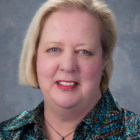Heroin killed six times as many people in 2015 as in 2002, and the number keeps climbing. Drug overdose deaths totaled 52,400 in 2015, according to the National Institute on Drug Abuse. Last year they exceeded 59,000 – the largest annual jump ever recorded in the United States, and more than twice as many drug fatalities as were recorded in 2002.
For heroin alone, the increase was even more dramatic. More than six times as many people died of heroin overdoses in 2015 compared to 2002, and all evidence suggests the problem has continued to worsen in 2017.
The death count is the manifestation of an escalating public health crisis: opioid addiction, now made more deadly by an influx of illicitly manufactured fentanyl and similar synthetics. Drug overdoses are now the leading cause of death among Americans under 50.
On the local level, Orleans Parish Coroner Dr. Jeffrey Rouse says drug-related deaths are exceeding homicides, probably for the first time in the city’s history. Accidental drug-related deaths in New Orleans last year jumped to 211, from 92 the previous year.
The losses are more than statistics. It’s the rare New Orleanian who hasn’t lost a loved one to drugs or doesn’t know someone who has.
We must fight to keep addiction services available in several different forms: residential services, outpatient services and medically assisted therapies, to name a few.
As addiction comes so close to home, New Orleanians are wising up. You less often hear people blame the victim and say there must be something wrong with a person who would continue to use drugs despite the known consequences.
Well, there is something wrong with addicts, but it’s not a moral failing. The problem lies in their brain chemistry. Here’s how the American Society of Addiction Medicine defines the problem:
Addiction is a primary, chronic disease of brain reward, motivation, memory and related circuitry. Dysfunction in these circuits leads to characteristic biological, psychological, social and spiritual manifestations. This is reflected in an individual pathologically pursuing reward and/or relief by substance use and other behaviors.
Addiction is characterized by inability to consistently abstain, impairment in behavioral control, craving, diminished recognition of significant problems with one’s behaviors and interpersonal relationships, and a dysfunctional emotional response. Like other chronic diseases, addiction often involves cycles of relapse and remission. Without treatment or engagement in recovery activities, addiction is progressive and can result in disability or premature death. (ASAM 2017)
The public needs to grasp the reality of addiction if we are to address this health crisis collectively.
In 2016, Bridge House/Grace House had over 800 admissions. Of those, half reported opiates as their No. 1 drug of choice. Who are these residents? They are your son, your daughter, your niece, your neighbor. They are from all walks of life and from all socio-economic groups.
We recently asked residents at Bridge House/Grace House to answer a few questions. Their answers demonstrate how bad things had gotten for them.
- How easy it was to get opiates and heroin? Responses: “Easy” to “too easy.”
- Why did you try heroin/opiates? Responses varied: From “my pill addiction costs too much” to “loved the feeling after surgery.”
- Have you ever overdosed? Responses included: 8 times; 5 or 6 times; 10 times
- What did you do that you swore you would never do to get heroin/opiates? Responses: “Stole from my family, forged checks and pawned everything, shared needles.”
- Where did your addiction take you? “Down a very dark path; away from my kids, wife, mother; I lost everything; homeless and in jail.”
There is an old saying — no one says they want to be a drug addict when they grow up. The residents of Bridge House/Grace House come in scared and lonely, feeling helpless. They desperately want to change and learn new ways of living. How do we collectively meet the challenge?
We must secure the future of Medicaid for continued access to treatment. A few reasons why:
- Medicaid expansion has been a game-changer for substance abuse treatment: In states that expanded — unfortunately, Louisiana under then-Gov. Bobby Jindal at first refused to participate in the federal program — the proportion of people with substance abuse or mental health disorders who were hospitalized but not insured fell from 20 percent in 2013 to 5 percent in 2015, according to the U.S. Department of Health and Human Services.
- Under Obamacare, insurers have been required to offer so-called “essential health benefits,” including mental health and substance-abuse services. To sell insurance, insurers must cover addiction treatment, contraception, preventive care, and emergency services. That set of guarantees also applies to how states must structure their Medicaid programs. To the dismay of the medical community and many insurers, the recently failed effort in the U.S. Senate to “repeal and replace” the Affordable Care Act would have ended essential benefits for people covered under Medicaid expansion in 2020.
- Critics worry that if Republicans in Congress renew their campaign for canceled or scaled-back Obamacare, it would give states the option not to cover substance-abuse treatment. It would “leave a lot of places to drop substance abuse coverage” because it’s “cheaper if you don’t take care of peoples’ addiction,” says Keith Humphreys, a Stanford University professor of psychiatry who advised the Obama administration on drug policy.

We must fight to keep addiction services available in several different forms: residential services, outpatient services and medically assisted therapies, to name a few. We must support treatment over imprisonment – exactly what we seek to accomplish through our workforce development programs at Bridge House/Grace House. From our experience, vocational opportunities give residents the dignity and purpose required to promote self-worth and a sense of responsibility. Long-term recovery simply cannot occur without changing the entire individual.
We must remember that these are real people who, with support, can manage their addiction and become productive members of our community. We must demand and support prevention programs from an early age, before addiction can take hold. We must de-stigmatize addiction and addiction treatment by openly discussing our struggles and triumphs against the disease.
That’s something we do every day at Bridge House/Grace House, and it leads to moments of great joy and great sadness. Many who complete our programs stay connected to those still in treatment. It’s of enormous benefit to people just getting a grip on their addiction, but it’s also a critical factor in helping addicts farther along the road to recovery stay true to their goal.
Service to others is a major principle of long-term sobriety. Of course it doesn’t always work. Particularly in the past few years, we have seen too many die. Regardless of how many times someone has been in treatment, they will always be welcomed back. We will not give up.
We ask that you join us in our commitment to meet the demand for treatment. As a nation, we are in the midst of the deadliest epidemic in our history – and many lives hang in the balance. Please contact your representatives at the state and national level. Help secure and sustain the vital services that give addicts a chance at regaining sobriety.

If a loved one or someone you know needs treatment, please call our Intake Department at 504-821-7120 or email: clinical@bridgehouse.org. For more information on our treatment programs please visit our website, www.bridgehouse.org.
Else Pedersen, a licensed addiction counselor, is the chief executive officer of Bridge House/Grace House.
The opinion section is a community forum. Views expressed are not necessarily those of The Lens or its staff. To propose an idea for a column, contact Lens founder Karen Gadbois.

